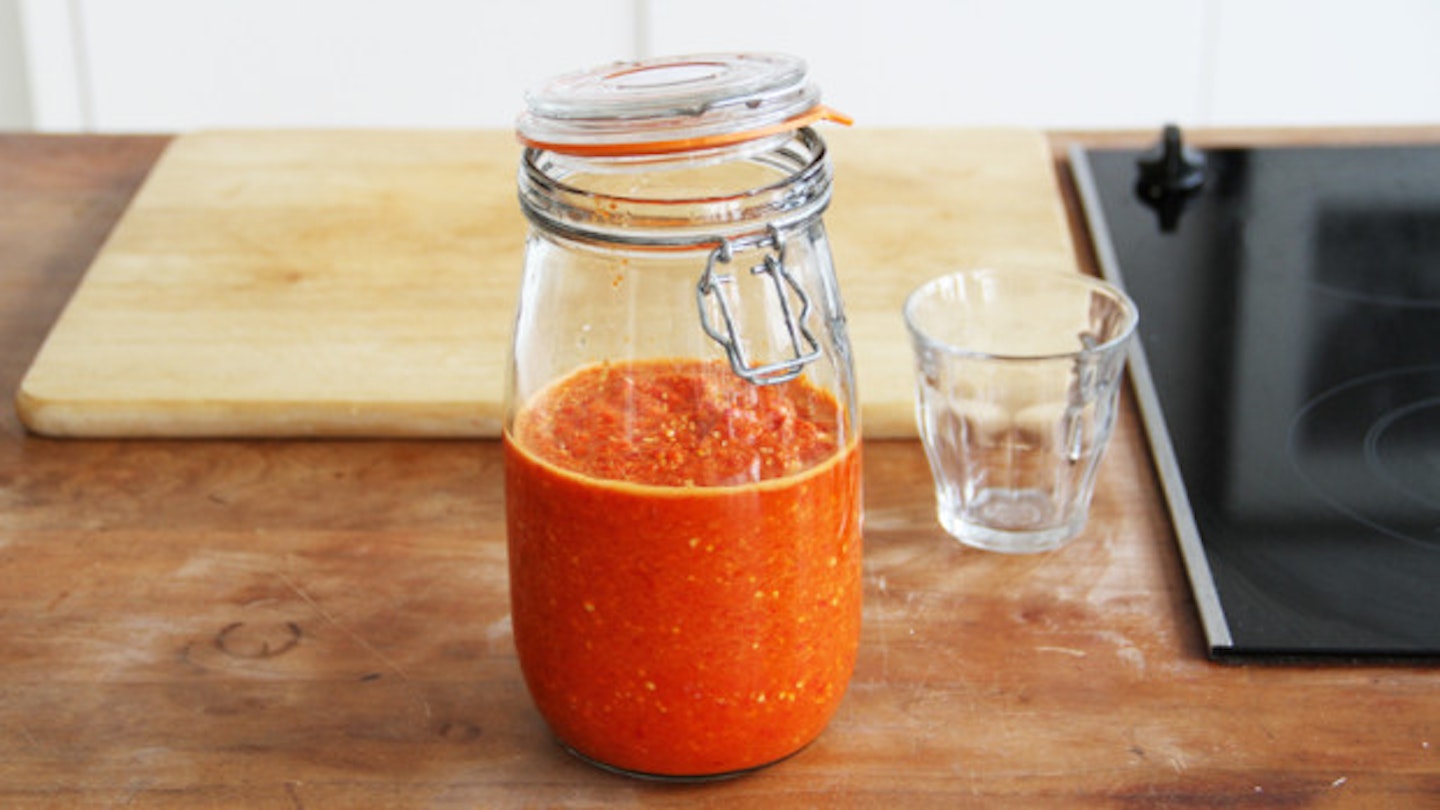Right now, we've got a bit of an issue at Debrief HQ and that issue is Sriracha. Yes, Sriracha the hot chilli sauce that originated from a small eastern coastal town in Thailand called Si Racha (hence the name). The problem we're having is that this sauce – which is basically made from chilli peppers, garlic, vinegar, salt and sugar – is taking over our lunches. For the last couple of months no meal has been complete without Sriracha. And we're not talking a tiny dollop; this is loads and loads of the stuff. So much that even when our noses are streaming from the spice, we still need more. What the hell is happening? And why is Sriracha so addictive (I use this term very loosely)?
Well, there is actually a scientific reason for it and it comes down to the body's reaction to spicy food. ‘Spicy food isn't addictive in the true sense of the word compared to such things as nicotine and caffeine and your body will never develop a true dependence on it,’ Shona Wilkinson, Nutritionist at Superfood UK explained. ‘There is however a reaction that is happening in the body that can explain why some people feel a craving for spicy food.’
This reaction is a result a compound found in chillis called capsaicinoids which trigger a reaction in the brain. ‘Capsaicinoids make the brain think it’s being burned. As a result of this, the body releases a neurotransmitter which we know as endorphins,’ Shona told me. Whilst endorphins are typically associated with good things, they can actually help to relieve pain as well, which is exactly what happens when it comes to spicy food. ‘They do this by blocking the nerves ability to transmit pain signals.’
But that’s not the only thing that happens in the body when you have spicy food. ‘The neurotransmitter dopamine, responsible for a sense of reward and pleasure, is also released. This means that some people who eat large amounts of spicy food get a great feeling which is almost a high,’ Shona explained. Which can go some way in explaining the idea of spicy food – like Sriracha – feeling a bit ‘addictive’: because people might crave that feeling.
Dr Paul Rozin is a professor of psychology who began studying humans and spice around the 1970s and coined the phrase ‘benign masochism’ whilst investigating the human love of chillis. This, he says, explains why people like horror films or extreme sports, as well as spicy food. He theorises that these things let a person feel a certain level of danger or fear whilst in reality staying ‘safe’. With this in mind, it has been argued that people who enjoy spicy food are more likely to be 'risk takers'. He also argues that people do it in order to experience relief at the end and the more extreme the situation (in this case, how spicy something is), the greater the sense of relief at the end.
One study which investigated those who enjoy chilli backed this up. They found that ‘sensation seeking’ was a strong predictor of whether someone enjoyed spicy food and how often they ate it. Interestingly, they also found that physically, those who enjoy spicy food don’t actually feel the ‘burning’ sensation less, they just like it more.
‘These [the people who enjoy spicy food] might be someone who is looking for the experience of a "high" and the rush of endorphins,' Shona added. 'You can argue that these are risk takers but it can also be people who suffer from depression or people looking for a bit of a release from their everyday stressful life. Capsaicin is thought to have many health benefits so include it in your diet - in moderation!’
And whilst it would be natural to think that people who enjoy spicy food just get ‘used’ too spicy food and then eat it more, there’s actually not that much evidence to suggest this is the case. In one study they found that other factors such as social influence and personality differences played more of a part. Another study by Dr Rozin and a colleague in 1980 studied compared the pepper preferences of Mexicans and Americans on the premise that Mexicans generally eat chillies more than Americans. They argued that if desensitisation (e.g. getting used to it) could explain our preference for spicy food (and the 'pain' the comes with it), then Mexicans should show higher tolerance for capsaicin than Americans, but the data only weakly supported this.
So now you know why you might be wanting to slather everything in Sriracha – basically because you want that rush of endorphins to make you feel good – and you should probably get a handy keyring-sized bottle, just in case of emergencies.
Like this? You might also be interested in:
7 Beetroot Recipes To Help You Get To Like Everyone's Favourite Superfood
We Asked An Expert What We Should Be Eating Before And After A Workout
Follow Chemmie on Twitter @chemsquier
This article originally appeared on The Debrief.
